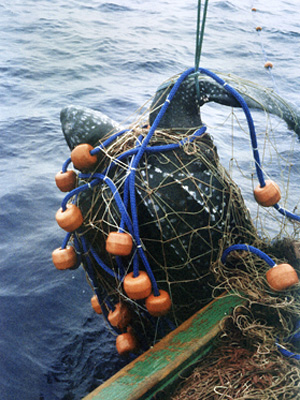New Maps First to Track Global Coastal Fishing Activity
Research from SDSU and Duke can help monitor fisheries and preserve marine environments.

Overfishing has long been cited as a threat to marine conservation, but new research from San Diego State and Duke University provides insight into how coastal fishing pressure may impact the marine environment.
For the first time, researchers have mapped coastal fishing efforts in six global regions, providing information that can be used to better manage fisheries and preserve the environment.
Tracking the oceans
The maps provide the first quantitative assessment of the number of boats and the types of fishing gear used in West Africa, the West Indian Ocean, Southeast Asia, the Caribbean, the Southwest Atlantic and the Eastern Tropical Pacific. The information is necessary to understand the impact fishing has on fish stocks, bycatch species (e.g., sea turtles and marine mammals) and coastal habitats, and provides a first step toward a better understanding of where fisheries management is most critical.
“Quantifying fishing efforts is a necessary measure of fishing activity, and is a key link to evaluating sustainability and environmental impacts of coastal fisheries,” said Rebecca Lewison, SDSU biology professor and lead researcher on the project.
Avoiding damage to coastal ecosystems
According to Lewison, some types of coastal fishing gear can cause direct damage to coastal ecosystems, for example, bottom trawl nets drag heavy nets along the ocean floor and can destroy sensitive habitats like coral reefs or rocky structures.
Other fishing gear can lead to high catch levels of species of conservation concern, like sea turtles and marine mammals. These animals will be discarded after being caught, but will die as a result of the injuries they incur from gear entanglement.
Coastal fisheries are the lifeblood of local economies and a critical source of food for people around the world. An estimated 38 million people rely on fish for employment, and more than 1 billion people rely on ocean resources for food.
Despite that, the intensity of coastal fishing has so far received relatively little scrutiny, in large part because of the magnitude of this fishing sector and its lack of infrastructure.
Identifying 'hot spots'
The research team identified a number of “hot spots,” areas of particularly high fishing intensity. Longline fisheries, which use a more selective type of fishing gear, were particularly dense in the Caribbean, whereas mixed-gear fisheries, which use non-selective gear, were high throughout West Africa and Southeast Asia.
Within regions, the team was also able to identify countries that that had substantially higher fishing densities than other countries in the same region.
“The bottom line is that the intensity of coastal fisheries is high around the world. But with this new spatial information, we can begin to hone in on areas where environmental impacts are likely to be the highest,” Lewison said.
“Our research also highlighted areas where better data are essential. This gives the management community a more robust starting point to kick-start work on improving sustainable fisheries.”
The research was supported by a grant from the Gordon and Betty Moore Foundation to Project GloBAL (Global Bycatch Assessment of Long-lived Species). The article appeared in the journal PLoS ONE in December.



